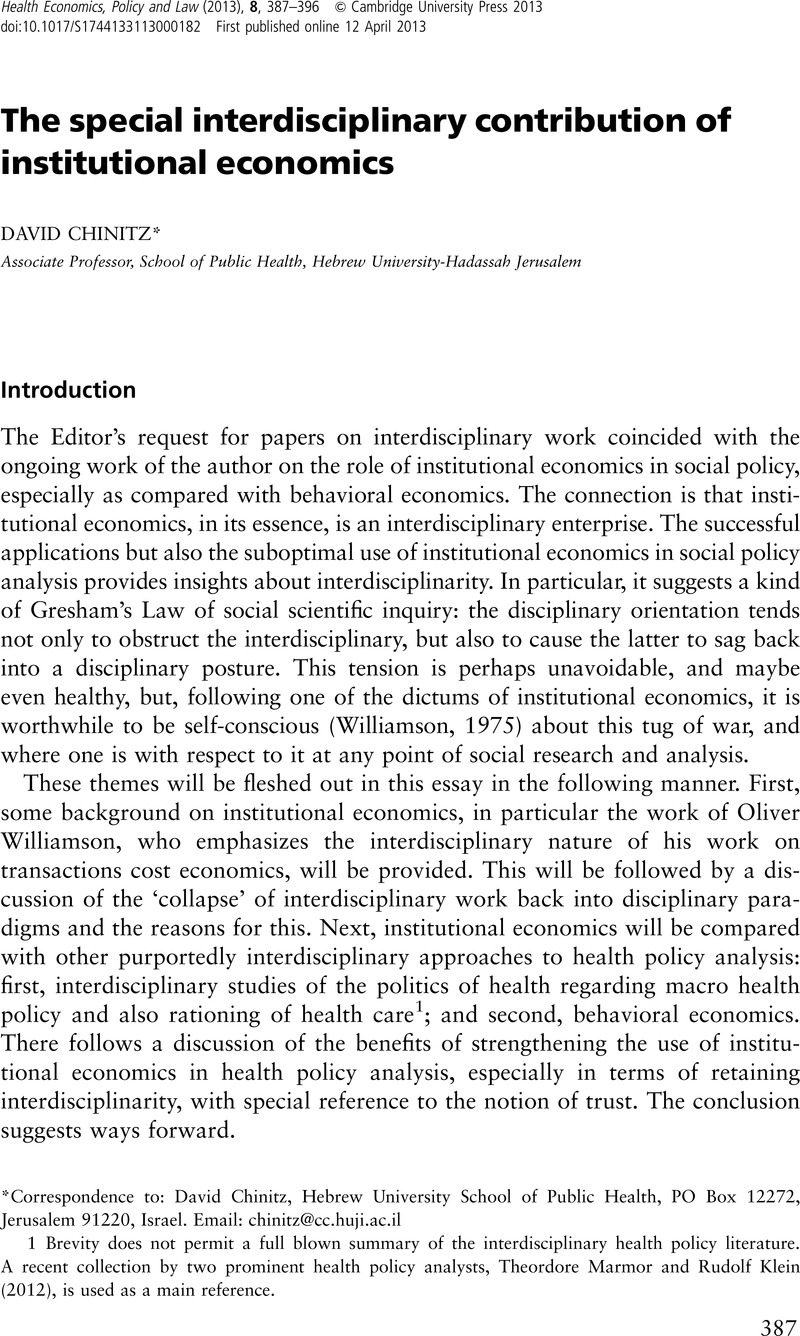Crossref Citations
This article has been cited by the following publications. This list is generated based on data provided by Crossref.
Möllering, Guido
2014.
Trust, calculativeness, and relationships: A special issue 20 years after Williamson's warning.
Journal of Trust Research,
Vol. 4,
Issue. 1,
p.
1.
MMllering, Guido
2014.
Trust, Calculativeness, and Relationships: A Special Issue 20 Years after Williamson (1993a).
SSRN Electronic Journal,
Suh, Taewon
2017.
Exhibited trust and excessive knowledge specificity: A competitive altruism hypothesis.
Industrial Marketing Management,
Vol. 62,
Issue. ,
p.
51.



